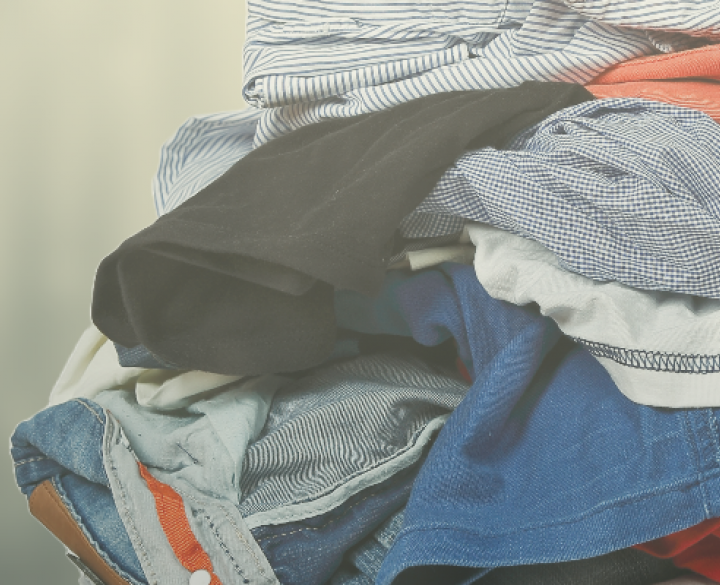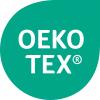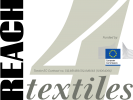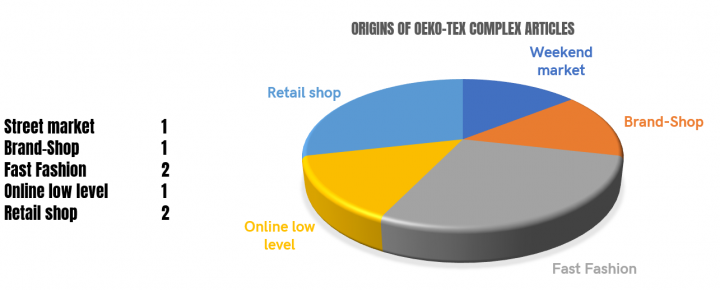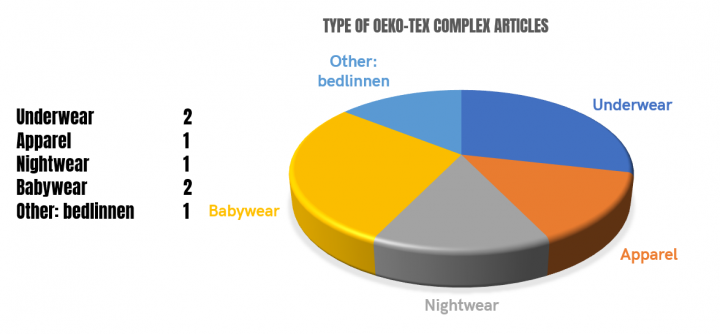During the REACH4Textiles project, Centexbel and partners conducted two test campaigns, from which OEKO-TEX® certified products emerged as fully REACH compliant.
1st test campaign: 80 articles, 7 of which OEKO-TEX® certified were sampled during May-June 2022
2nd test campaign: 80 articles, none of which OEKO-TEX® certified were sampled during January-February 2023
Textiles are an integral part of our daily lives. Textiles are everywhere and are essential. In order to produce textiles or to improve the function they fulfil (oil and water repellency, fire retardancy, anti-static properties, etc.), chemicals are used.
Around 1900 chemical components are used in the production of textiles of which more than 150 are classified as hazardous with respect to health and the environment.
All chemicals used to produce textiles, as well as all textile articles put on the European market need to comply with the REACH regulation. However, this is not always the case, some textile products do not respect REACH regulation and can contain harmful chemical substances. RAPEX reports show that clothing is the third most important class of materials after toys (which also contain textiles) and Motor Vehicules. In more than 20% of the cases the notified risks were related to chemicals.
The REACH4Textiles project aimed at bringing all actors together in sharing knowledge on textiles, chemical testing methods to make market surveillance more effective and to contribute to a level playing field in the textile market.
The goal of the REACH4Textiles project is
- to gain a more in-depth insight in the amount of textiles materials present on the market that falling under REACH regulation, which type, or classes of materials are more prone than others.
- to gather knowledge about the different test methods, their reproducibility accuracy, detection limit and quantification limit. An element here is the development of a tool for strategic experimental design and the development of methods for rapid decision making (risk-based) on site (customs) in order to further control critical products (imports). To Reach these targets, samples of different textile materials are collected on the field; in shops and via e-commerce platforms, public markets, at customs.
- to create awareness at market surveillance, disseminate the lessons learned on testing for harmful chemicals and to bring market surveillance actors together to exchange best practices and to provide training for more effective market control, focusing on textile products, production techniques and the chemicals used, transfer of test method where appropriate, interpretation of test results in order draw conclusions.
REACH4Textiles has outlined the relevant market surveillance authorities for textiles in Europe, potential overlaps and cooperation levels between the authorities with a particular focus on the enforcement of textile labelling and textile REACH compliance in EU Member States and the EEA, Switzerland and Turkey.
REACH4Textiles has also conducted two testing campaigns (160 articles were tested by means of 2374 tests).




